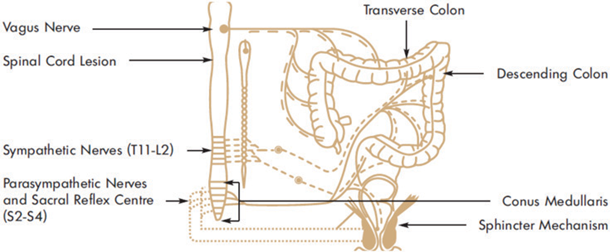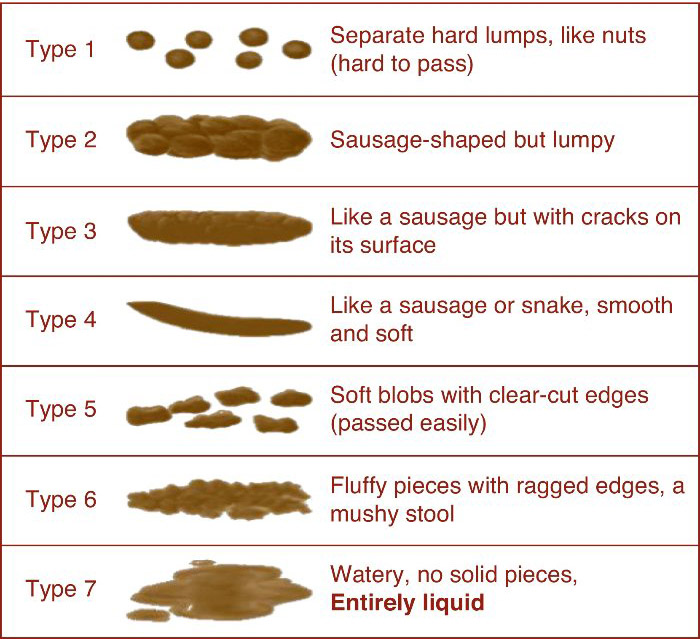What is defecation?
Defecation is the elimination of waste and undigested food in the form of faeces from the colon via the anus.
The enteric nervous system interacts with the central nervous system, via the sympathetic and parasympathetic system and neuropeptides, to allow ingested food and fluids to move from the stomach through the gut.1
The diagram below shows the nerve supply (or innervation) to the colon, anal sphincters and pelvic floor.

Source: Rural Spinal Cord Injury Project Management of the Neuropathic Bowel for Adults with Spinal Cord Injuries 2005 guidelines fact sheet
For people without damage or injury to the nervous system:
- The bowel is typically emptied daily, usually in the morning and in response to a gastrocolic reflex (where ingestion of food stimulates defecation 20-30 minutes later).
- When a person senses that their rectum is full, they are able to suppress the urge to defecate by contracting the external anal sphincter until it is convenient to access a toilet.
- Voluntary contraction of the external anal sphincter completes evacuation.
Best position for defecation
- The optimal position to defecate is with knees flexed and the upper body bending forward, supported by elbows or hands on knees.
- The person can easily increase intra-abdominal pressure to push faeces in the rectum towards the anorectal verge. With stretching of this area, the anorectal reflex is stimulated causing relaxation of the proximal anal region to allow expulsion of faeces.
Stool consistency
Stool consistency is important and can take a variety of forms, which are best described using the Bristol Stool Chart.

Source: Reproduced with permission of Dr KW Heaton, Reader in Medicine at the University of Bristol.
- Lynch AC, Antony A, Dobbs BR, Frizelle FA. Bowel dysfunction following spinal cord injury. Spinal Cord. 2001;39(4):193-203.